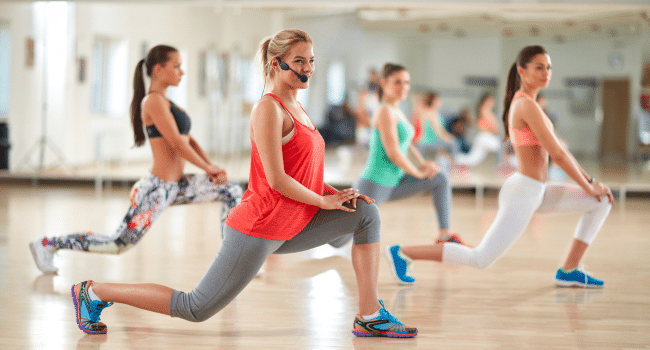Table of Contents
Instructor fitness music refers to rhythm-based soundtracks designed to guide workouts, support class structure, and keep participants engaged. It plays an essential role in maintaining energy, improving timing, and creating a motivating environment. instructor fitness music helps both instructors and participants stay aligned with the intended pace of the session.
How does instructor fitness music strengthen class dynamics?
The music sets the mood and tone of the class, helping participants feel more connected to the instructor and each other. The rhythm encourages movement unity, while the energy of the soundtrack keeps participants motivated. Strong class dynamics lead to better interactions, improved performance, and a more enjoyable experience for everyone involved.
Why does music help guide movement during workouts?
Music with consistent beats provides a natural structure for coordinating exercises. Whether the class involves cardio, strength training, or dance-based movements, the rhythm helps participants follow the intended tempo. This makes transitions easier and increases the overall smoothness of the routine.
Does instructor fitness music improve coordination among participants?
Yes, music helps participants synchronize their movements with each other and with the instructor. When everyone follows the same beat, coordination improves naturally. This reduces confusion, makes routines more manageable, and increases the enjoyment of the session.
How does music contribute to participant satisfaction?
Participants feel more engaged and energized when the music matches the workout intensity. The right soundtrack enhances mood, reduces fatigue, and increases motivation. This makes participants more likely to enjoy the class, return regularly, and recommend it to others.
How does music support instructors in leading effective sessions?
Instructors use music to structure each segment of the class, from warm-up to cool-down. The tempo helps signal when to increase or decrease intensity. Music also supports the instructor’s cues by providing a predictable rhythm that participants can rely on.
Can instructor fitness music enhance workout performance?
Music can help participants push harder by elevating energy levels and reducing perceived exertion. When the mind focuses on the rhythm, the body is more likely to maintain consistent movement. This leads to better performance, improved endurance, and a more productive workout.
What types of music are most effective for instructor-led classes?
Effective choices include upbeat tracks for cardio, steady rhythms for strength training, and dynamic mixes for dance-based routines. The music should match the intensity and flow of each stage of the class. Instructors typically choose tracks that are familiar, high-energy, and motivating.
How does music help maintain motivation throughout the class?
Motivation often fluctuates during a workout, especially during challenging sections. Music helps maintain emotional energy by offering a constant source of stimulation. Rhythmic patterns, uplifting melodies, and energetic beats keep participants engaged and reduce the desire to stop.
Does music reduce stress and improve mood during classes?
Yes, fitness music stimulates the release of endorphins, which elevate mood and reduce stress levels. When combined with physical movement, music creates a powerful emotional boost. This improves overall well-being and enhances the satisfaction participants feel after the class.
Can instructor fitness music help with timing and pacing?
Music provides a consistent tempo that makes it easier for instructors to manage time. Each track can represent a portion of the class, helping structure warm-ups, peak phases, and cool-down segments. This ensures the class flows smoothly and stays within the intended duration.
How does music enhance group energy and class atmosphere?
A strong soundtrack creates an energetic environment that elevates group enthusiasm. Participants feed off each other’s energy and the music, making the class more dynamic. This sense of shared excitement strengthens the overall experience.
Does instructor fitness music help beginners feel more comfortable?
Music makes classes feel less intimidating by shifting focus away from individual performance. Beginners can follow the beat without worrying about perfect execution. The supportive atmosphere created by music encourages them to relax and enjoy the session.
Can music support advanced participants as well?
Advanced participants benefit from music that challenges their stamina and supports high-intensity movements. Faster rhythms and more dynamic transitions can push them to perform at a higher level. Music also enhances the mental focus needed for complex or advanced routines.
How does music help unify participants during group workouts?
Rhythm creates a shared pattern that guides everyone’s movements. This unity strengthens the sense of community within the class. When participants move together, it fosters connection, teamwork, and group cohesion.
Does music make workouts feel shorter and more enjoyable?
Music distracts from physical exertion by engaging the mind with rhythm and melody. Participants often feel like time passes faster when working out with music. This increases enjoyment and helps maintain long-term participation.
How do instructors choose the right playlist for each class?
Instructors select music based on the style of workout, class demographics, and intended energy level. They consider tempo, transitions, and emotional tone when building a playlist. The right combination supports seamless movement and enhances the session’s overall flow.
Can instructor fitness music create a sense of anticipation in the class?
Music can build excitement through crescendos, drops, and tempo changes. These moments help participants prepare mentally for upcoming challenges. Anticipation creates a more dynamic and emotionally engaging workout experience.
How does music support recovery and cool-down phases?
Slower, softer music helps transition the body from intense activity to relaxation. It signals participants to slow their breathing, stretch effectively, and unwind. This supports physical recovery and reduces the risk of soreness.
What long-term benefits come from using instructor fitness music consistently?
Long-term use of fitness music enhances overall class cohesion, improves participant retention, and strengthens performance. Participants develop better coordination, enjoy a more positive workout environment, and experience improved mood and motivation. Instructors benefit from smoother class flow and more engaged groups, making music an invaluable tool for long-term class success.
